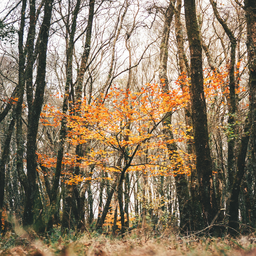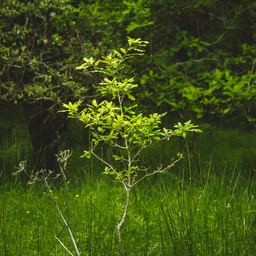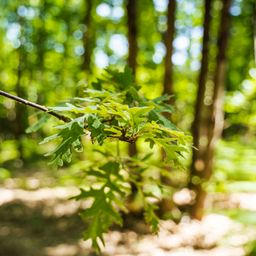
Common Oak: It's meaning & use
The common oak is, as the name implies, the most common oak species of the European forests. But don't let the name fool you, it is majestic and impressive!
Pedunculate Oak
Despite its Latin name, Quercus robur is less resistant to drought than its cousin the Sessile Oak, making it more valuable but more threatened by climate change.
Why plant Common Oak?
Widely spread across Eurasia, the Common Oak is well-suited to oceanic, sub-oceanic, and moderate to humid continental climates. Alongside the Sessile Oak, it is a major economic species. With 4.5 million hectares of oak forests, France accounts for nearly 40% of Europe’s total oak forest area, making it the largest oak producer in Europe and second globally, just behind the United States.
The Common Oak is a versatile species that grows on a variety of soil types, including clay, silt, sand, and peat. However, it truly thrives in mesophilic soils, which are neither too dry nor too wet, as well as mesophygrophilic soils, which are cool and wet. This preference for moisture means the Common Oak is well-suited to regions with regular rainfall and limited drought, such as Brittany, Mayenne, and Auvergne. Interestingly, while it can survive flooding as an adult tree, and its acorns are equally resilient, the Sessile Oak does not share this trait.
Pedunculate Oak - Overview
Pedunculate Oak - Overview

Pedunculate Oak - Species requirements
The Common Oak thrives in cooler, wetter regions, where it historically flourished during colder periods. However, this adaptability becomes a challenge in the face of climate change, as warmer, drier conditions make it less suitable for Mediterranean and continental climates compared to the Sessile Oak.
It tolerates both acidic and calcareous soils, but its true preference is for deep, nutrient-rich ground with consistent water supply. Common Oak generally grows in plains, hills, and lower mountain areas, rarely found at altitudes above 1,300 meters.
How Common Oak wood is used
When it comes to sought-after timber, the wood of the Common Oak is as prized as that of the Sessile Oak, the two are so similar that even the trained eye struggles to tell them apart. Historically, Oak has played a significant role in carpentry and construction. For instance, the great forest of Notre-Dame de Paris was built from Common Oak, and it will once again be used in the cathedral's restoration, including its iconic spire and framework.
Oak's versatility doesn’t end there. It is a cornerstone in cooperage, especially for crafting barrels used in winemaking and cognac production. French Common and Sessile Oaks are exported worldwide, and without them, the flavors of these beverages would be drastically different. Oak is also valued in marquetry, parquetry, cabinetmaking, and for creating poles, sleepers, and even paper pulp from lower-quality logs. Moreover, its bark is rich in tannins, which have been used for centuries in the leather-tanning process.
Symbolism of the Common Oak
The Common Oak is a true monarch of our forests and has been revered by ancient cultures, from the Gauls and Greeks to the Romans and Germans. Known for its slow growth, robust strength, and impressive longevity, it stands as a symbol of fidelity and eternal union. This makes it an ideal gift for life's major milestones, such as weddings or the birth of a child.
Beyond these occasions, the Common Oak is also a symbol of strength, wisdom, and nobility, making it a thoughtful gift for fathers to express deep respect and love. Furthermore, this majestic tree is believed to connect the earth with the heavens, serving as a profound symbol when planted to honor a lost loved one. The act of planting a Common Oak can represent a powerful connection to the invisible world, offering a sense of continuity and remembrance.
Our selection of trees
Our goal is to enable anyone to do something that benefits nature and helps us to live in a more harmonious world. So why not become a tree owner in a European forest and help combat climate change?






Please note that this is promotional communication. See our notice of information.





